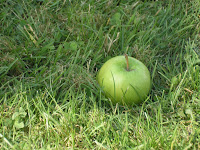In addition to this post on Top Major 6 Principles of Art & Design For Artists and Beginners Cont'd as discussed in our previous article on 5 Basic Principles of Art & Design For Artists and Beginners. If you can remember vividly in the previous article when i said that i was just going to discuss and analyze only a few principles of Art & Design, So today I have brought you the continuation part of our previous article just like as i promised. So sit tight, grab a cup a coffee and relax as i take you on another interesting topic that might come in handy that you must know to succeed in the world of Art.
The principles of Art & Design defines how the Artists design their work, either consciously or unconsciously, by controlling, ordering and combining the element of Art and Painting. Principles of Art and Design can simply be said to be the way the art elements are used in final composition. The principles of Art and Design are divided into various forms which are as follows:
(i) Emphasis
(ii) Repetition
(iii) Harmony
(iv) Perspective
(v) Proportion
(vi) Rhythm etc.
READ MORE: 5 BASIC PRINCIPLES OF ART & DESIGN FOR ARTISTS AND BEGINNERS.
These principles listed above are the basic knowledge and analytical framework every artist and Beginners must and should know in order to succeed and do great in Art.
(1) EMPHASIS: Emphasis is an area or object within the artwork that draws attention and become a focal point. Emphasis is another most important element or character in a composition which can be achieved through the use of a focal point. If too many focal point is being emphasized, It might confuse the viewer.


Emphasis can also be achieved through the following ways:
(i) Isolation: This is when one item is isolated from the other elements or group of elements, It becomes the focal point.
(ii) Placement: This happens when if too many elements point to one item, all attentions is then directed towards that element and a focal point is then said to be achieved.
(iii) Contrast: Any item that differs from the from the dominant figures in a composition. A change in color or value can immediately attract attention. Color is an element often used in emphasis by contrast.
Emphasis is used by artists to create dominance and focus in their work. Artists can emphasize value, color, shape, or other Art element to achieve dominance.
(2) REPETITION: Repetition can be used on all of the visual element. If one shape or objects are repeated without any change, They can quickly get boring. Repetition works with pattern to make the art-work seem active. That is to say that repetition in some cases gives motion of objects in a picture or visual image. Although motion is not a principle, but rather it is one of the magic effects seen in a still life picture when it has motion.

(3) HARMONY: Harmony simply means pleasant musical sound made by different notes being placed or sung at the same time. When people are peaceful and agree with each other, or when things seem right or suitable together. In visual design, Harmony means all parts of the visual image relating to and complementing each other.
Harmony in music, describes how complementary layers and or effects can be joined to produce a more attractive whole. The composition is complex but everything appears to fit with everything else.
READ MORE: Introduction To Painting - A GUIDE TO PAINTING BASICS.
Harmony pulls the pieces of a visual image together and can be achieved through;
(i) Rhythm: Rhythm is the flow depicted in a visual.
(ii) Repetition: Repetition re-emphasizes visual units connecting parts and creating an area of attention.
(iii) Pattern: Pattern is a combination of elements or shapes repeated in a recurring and regular arrangement. In pattern, When it is repeated in an interesting arrangement, the overall visual image comes interesting.
(4) PROPORTION / SCALE: Proportion is the relative size of parts of a whole element within an object. It can also be said to be the relative size of an object when compared against other elements or standard. That is to say that proportion simply refers to the relative size and scale of the various elements in a design. While scale can be the size of an object in relative to another object.

There are two ways to consider scale in Art.
(i) Scale is used within Artistic compositions.
(ii) The Scale of the work itself, its size in relation to others works. That is to say that often, the scale of a work can add to the compositions visual impact.
Scale can be used to distract or confuse the viewer by providing an unreal sense of proportion.
It can also be used to draw the viewers attention to the exaggerated or unexpected.
(5) RHYTHM: Rhythm is a combination of elements repeated with variations. Rhythm can be achieved through the repetition of visual movement of the element which are space, color, lines, textures, values, shapes and forms. Rhythm provided a sense of motion. It also refers to the artists attempt to move the viewers attention across recurrent motifs in a composition using the repetition inherent to the idea of a visual tempo or beat.

Other types of rhythm are as follows:
(i) Progressive: This type of rhythm is most often achieved with a progressive variation of the size of a shape, though it's color, value or texture could be the varying element.
(ii) Alternating: In this type of rhythm, Successive patterns of the same elements reappear in a regular order.
(iii) Perspective: Perspective is created through the arrangement of objects in two-dimensional space to look like they appear in real life. It adds realism to a visual image. Perspective can be used to draw the audience in a visual and it can be achieved through the use of relative sizes of objects, overlapping objects and blurring or sharpening objects.
READ MORE: Elements Of Painting/Art ~ THE 7 ELEMENTS OF PAINTING/ART
Once Artists, Students and Beginners, have an understanding of formal analysis, They will be well prepared to put this theory into practice by making their own images based on the elements and principles of Art and Design. Whether in Painting, Photography, or Sculpture. The theory of formal analysis will help Artists, Students, and Beginners to compose their work of art as professional Artist would.
HOPE THIS POST WAS HELPFUL??
PLEASE SHARE WITH US HOW YOU FEEL ABOUT THIS POST BY DROPPING YOUR COMMENTS BELOW ON THE COMMENT BOX....















0 comments:
Post a Comment
Hope This Post Was HelpFull??
We Will Be Happy To See Your Thoughts...
PLEASE LEAVE A REPLY..